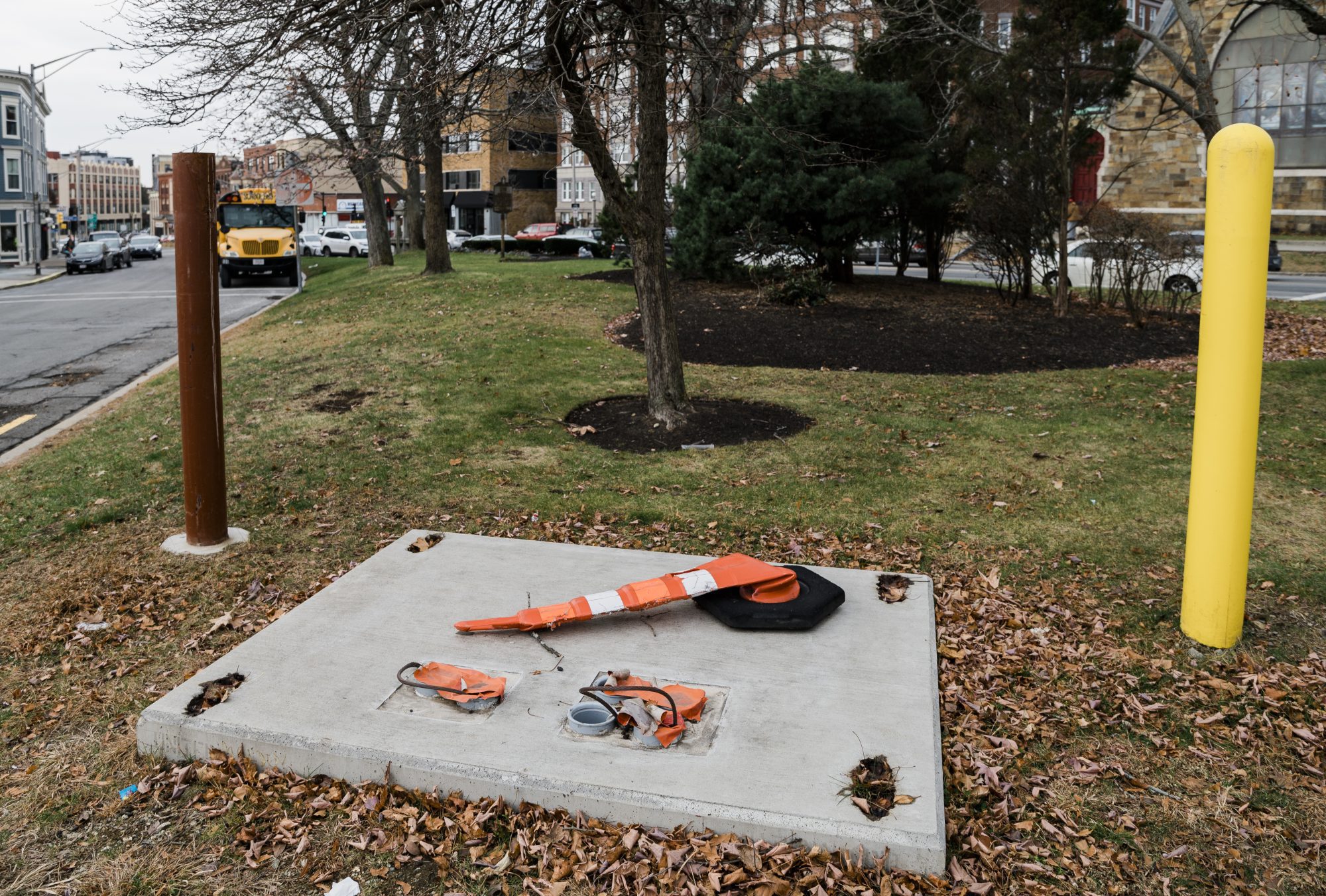With its tercentenary sign encapsulating three centuries of Lynn history and the stone fountain dedicated to animal lover George T. Angell by the “schoolchildren of Lynn,” the traffic island at Nahant and Broad streets is a downtown oasis.
It’s charm, unfortunately, is marred by an unsightly concrete pad constructed at one end of the island and surrounded by four bright-yellow anti-collision pillars. A squashed traffic cone and exposed wiring is visible on top of the pad.
The pad and “bollards” were installed last spring to support a big green transformer box that Lynn Public Works (DPW) Commissioner Andrew J. Hall said National Grid plans to place on top of the pad.
The transformer, said Hall, will increase electrical network reliability in the area around the traffic island.
That’s good news. But exactly why does an ugly metal box and four uglier yellow collision pillars get placed in a beautiful and historic downtown mini-park?
Hall said the city-siting process for utilities providing electricity, high-speed cable, natural gas and a range of other services begins with a utility request filed with DPW.
The request is reviewed by a DPW employee and forwarded to the City Council for review and approval.
Hall said about 20 “grants for location” siting requests from utilities are filed with DPW and forwarded to the council annually. As a rule of thumb, utilities request siting locations as close as possible to the pipe or cable network or equipment that supplies the service provided by the utility.
Each request involves soliciting abutters’ views about the specific site request, Hall said.
That’s nice to know, but we think the city can do a better job approving “grants for location” sites requested by utilities.
For instance, the traffic island now partially blighted by an industrial-strength concrete pad is located barely a half block from an alleyway running past the former Central Congregational Church toward the rear of the Harrington School.
That site would have been a much more unobtrusive location for a transformer box. We think it makes sense for councilors to consult local history experts like Lynn Museum Director Doneeca Thurston and Grand Army of the Republic building Curator Wendy Joseph to assess the historical importance — and fragility — of locations sought by utilities prior to siting approval.
Utilities provide vital services that allow us to live in comfort and convenience. But the decision to site a transformer on the Nahant Street traffic island is proof city officials need to perform more rigorous utility-siting-request reviews.

